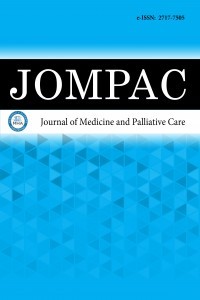1.
Govindan R, Page N, Morgensztern D, et al. Changingepidemiology of small-cell lung cancer in the United States overthe last 30 years: analysis of the surveillance, epidemiologic, andend results database. J Clin Oncol. 2006;24(28):4539-4544.
2.
Bernhardt EB, Jalal SI. Small cell lung cancer. Cancer Treat Res.2016;170:301-322.
3.
Cerny T, Blair V, Anderson H, Bramwell V, Thatcher N.Pretreatment prognostic factors and scoring system in 407 small-cell lung cancer patients. Int J Cancer. 1987;39(2):146-149.
4.
Greten FR, Grivennikov SI. Inflammation and Cancer: Triggers,Mechanisms, and Consequences. Immunity. 2019;51(1):27-41.
5.
Mantovani A, Allavena P, Sica A, Balkwill F. Cancer-relatedinflammation. Nature. 2008; 454(7203):436-444.
6.
Yang R, Chang Q, Meng X, Gao N, Wang W. Prognostic value ofsystemic immune-inflammation index in cancer: a meta-analysis.J Cancer. 2018;9:3295-3302.
7.
Qi Q, Zhuang L, Shen Y, et al. A novel systemic inflammationresponse index (SIRI) for predicting the survival of patients withpancreatic cancer after chemotherapy. Cancer. 2016;122(14):2158-2167.
8.
Li S, Yang Z, Du H, Zhang W, Che G, Liu L. Novel systemicinflammation response index to predict prognosis afterthoracoscopic lung cancer surgery: a propensity score-matchingstudy. ANZ J Surg. 2019;89(11):E507-E513.
9.
Öztürk Ergür F, Öztürk A. A new prognostic marker in smallcell lung cancer: red cell distribution width ratio of hemoglobin.Anatolian Curr Med J. 2023; 5(2); 148-152.
10.
Bozkaya Y, Kurt B, Gürler F. A prognostic parameter in advancednon-small cell lung cancer: the ratio of hemoglobin-to-red celldistribution width. Int J Clin Oncol. 2019;24:798-806.
11.
He Y, Gong R, Peng KW, Liu LZ, Sun LY, Wang HY. Lymphocyte-to-C-reactive protein ratio is a potential new prognosticbiomarker for patients with lung cancer. Biomark Med.2020;14(9):717-726.
12.
Yılmaz H, Yersal Ö. Prognostic significance of novel inflammatorymarkers in extensive-stage small-cell lung cancer. J Can Res Ther.2022;18:691-696.
13.
İriağaç Y, Çavdar E, Yolcu A. The prognostic importance oflymphocyte/monocyte ratio in diffuse stage small cell lungcancer. Ahi Evran Med J. 2022; 6 (1):71-76.
14.
Rami-Porta R, Asamura H, Travis WD, Rusch VW. Lungcancer - major changes in the American Joint Committee onCancer eighth edition cancer staging manual. CA Cancer J Clin.2017;67(2):138-155.

